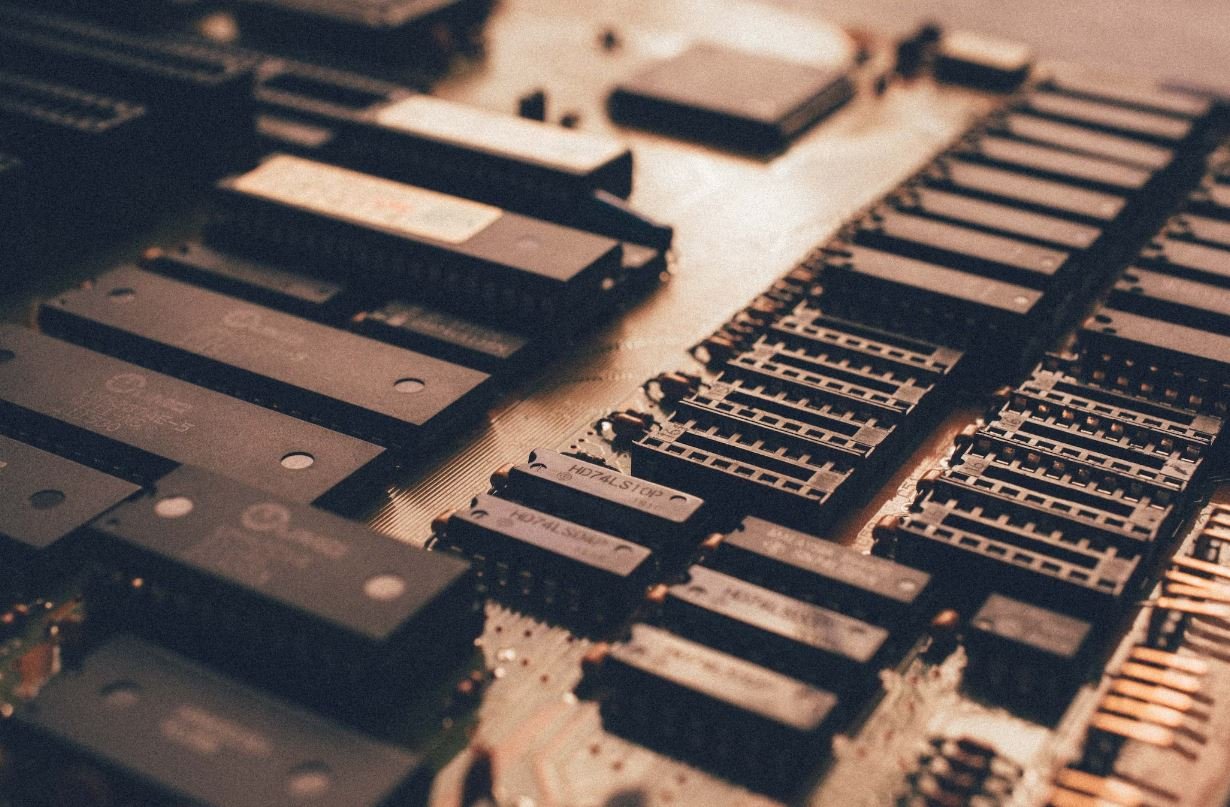AI News Reporter
In this rapidly evolving technological landscape, Artificial Intelligence (AI) has become an integral part of our lives. One of the significant applications of AI is in news reporting. AI-powered news reporters are revolutionizing the way we consume news by providing real-time updates and insights. This article explores the role of AI news reporters and its impact on journalism.
Key Takeaways
- AI news reporters are leveraging artificial intelligence to deliver real-time news updates.
- These systems are capable of generating news articles from raw data using natural language processing (NLP).
- AI news reporters are enhancing the speed and efficiency of news reporting.
- Despite their advantages, AI news reporters raise ethical concerns regarding misinformation and biased reporting.
- Journalists can collaborate with AI systems to improve news reporting and streamline research processes.
AI news reporters utilize advanced algorithms to gather, analyze, and present information. By harnessing the power of natural language processing (NLP), these systems can process vast amounts of data and generate human-like news articles. These algorithms can analyze trends, identify patterns, and offer meaningful insights. *AI news reporters bring accuracy and efficiency to news reporting, empowering journalists to focus on quality content creation.*
The Role of AI in News Reporting
AI systems are designed to work alongside human journalists to streamline the news reporting process. They can perform tasks such as data collection, fact-checking, and news aggregation. By automating repetitive and time-consuming tasks, AI news reporters enable journalists to focus on critical analysis and engaging storytelling.
Furthermore, AI news reporters can generate news articles in real-time, ensuring that the latest information reaches the audience promptly. *By providing rapid updates, AI news reporters keep the audience informed and up to date.* This technology offers a significant advantage, especially in situations where information needs to be disseminated quickly, such as during natural disasters or breaking news events.
The Advantages and Challenges
AI news reporters bring several advantages to the field of journalism, but they also face challenges. Let’s explore these advantages and challenges in detail:
| Advantages | Challenges |
|---|---|
|
|
Despite their impressive capabilities, AI news reporters raise concerns surrounding misinformation dissemination. Without proper checks and balances, AI algorithms can propagate inaccurate or biased information. However, by collaborating with skilled journalists, these systems can be refined to mitigate these concerns and ensure accurate and reliable news delivery.
Another challenge is the potential for biased reporting. AI systems rely on data, which can introduce biases based on the sources and algorithms used. Addressing this challenge requires continuous evaluation and improvement of AI algorithms to minimize bias and promote a balanced representation of news. *Finding the right balance between automation and human intervention is essential for responsible news reporting.*
Collaboration between Journalists and AI Systems
The future of journalism lies in the collaboration between journalists and AI systems. AI can assist journalists in conducting in-depth research, data analysis, and fact-checking, thereby enhancing the quality and accuracy of news articles. By leveraging AI, journalists can find new angles, identify trends, and develop unique storytelling techniques.
However, it is crucial to remember that AI can never replace human journalists entirely. The human touch, empathy, and critical thinking skills remain invaluable in journalism. AI news reporters serve as powerful tools that can complement the work of journalists, amplifying their capabilities and improving overall news reporting.
AI News Reporter Technologies
Let’s take a closer look at some of the prominent AI news reporter technologies:
- Natural Language Generation (NLG): NLG algorithms analyze data and transform it into human-readable news articles. These systems generate news reports quickly and efficiently, saving valuable time for journalists.
- News Aggregation and Filtering: AI-powered news aggregators collect and filter news information from various sources. They present personalized news feeds to users, ensuring that they receive relevant and up-to-date information.
- Automated Fact-Checking: AI news reporters can verify facts and detect potential misinformation. By automating fact-checking processes, these systems help journalists ensure the accuracy and integrity of their news articles.
Conclusion
AI news reporters have revolutionized the field of journalism by providing real-time updates, increasing efficiency, and enhancing news reporting processes. While they come with advantages and challenges, when harnessed responsibly, AI systems can amplify the work of journalists and deliver accurate, reliable, and engaging news content.

Common Misconceptions
Misconception 1: AI News Reporters Can Completely Replace Human Journalists
One common misconception about AI news reporters is that they have the capability to completely replace human journalists in the future. However, this is not entirely accurate. While AI can automate some aspects of news reporting, human journalists bring essential qualities that AI currently lacks:
- Emotional intelligence and empathy in storytelling
- Ability to conduct investigative journalism and uncover hidden truths
- Ethical decision-making in complex situations
Misconception 2: AI News Reporters are Completely Objective
Another misconception is that AI news reporters are completely objective and unbiased in their reporting. However, AI systems are created and trained by humans, which means there is potential for human biases to be encoded into the algorithms. It is crucial to understand that AI systems can inherit societal biases, leading to biased news reporting.
- AI algorithms can perpetuate gender, racial, or other types of biases
- They may emphasize certain perspectives over others due to programming biases
- Algorithms cannot interpret subtle contextual cues or understand all cultural nuances
Misconception 3: AI Can Generate Completely Original News Content
A common misconception is that AI news reporters can generate completely original news content from scratch. While AI can assist in content creation and streamline the process, it heavily relies on pre-existing data and information. AI news reporters often utilize data from various sources to generate news content or recap events:
- AI can summarize news articles but relies on pre-existing articles for information
- It uses structured data to compile news stories
- Generating original ideas, opinions, or analyses is currently beyond AI’s capabilities
Misconception 4: AI Can Replace Fact-Checking by Humans
Many people assume that AI can replace human fact-checkers and effectively verify the accuracy of news articles. However, while AI can automate some aspects of fact-checking, human judgment and critical thinking are still essential to determine the veracity of news:
- AI fact-checkers can assist with initial analysis but may not catch all subtle inaccuracies
- Understanding and verifying complex contexts requires human comprehension
- A combination of AI and human fact-checkers is most effective for comprehensive accuracy
Misconception 5: AI News Reporters Are Always Reliable Sources
Lastly, there is a common belief that AI news reporters are always reliable and trustworthy sources of information. However, AI systems are not infallible and can sometimes generate incorrect or misleading news content:
- Errors can occur due to inaccurate data sources or flawed algorithms
- AI systems might not have the ability to detect satire or distinguish between legitimate and fake news
- Human oversight is necessary to ensure the quality and reliability of AI-generated news

Table: Top 5 Countries with the Most AI Startups
Artificial Intelligence (AI) has been rapidly gaining traction around the world. This table illustrates the top five countries leading the way in AI startup creation. These countries have seen robust growth in their AI ecosystems, which highlights their commitment to developing innovative AI technologies.
| Country | Number of AI Startups |
|—————|———————-|
| United States | 1,678 |
| China | 1,243 |
| United Kingdom| 593 |
| Germany | 467 |
| Canada | 321 |
Table: AI Investment by Industry Vertical
Investment in AI technologies is on the rise across various industry verticals. This table shows the amount of investment in AI by different sectors. The figures highlight the sectors that recognize the potential of AI in transforming their operations and driving innovation.
| Industry | AI Investment (in billions) |
|—————|—————————-|
| Healthcare | $16.3 |
| Finance | $12.9 |
| Retail | $9.7 |
| Manufacturing | $8.5 |
| Transportation| $5.6 |
Table: AI Job Market by Skill Set
The demand for AI talent is booming as companies seek professionals with specific skill sets. This table displays the most sought-after skills in the AI job market. By highlighting these skills, it becomes evident which areas of AI expertise are in high demand.
| Skill | Percentage of AI Job Listings |
|—————|——————————-|
| Machine Learning | 45% |
| Natural Language Processing | 32% |
| Deep Learning | 28% |
| Computer Vision | 21% |
| Data Science | 18% |
Table: Impact of AI on Business Revenue
AI technologies have the potential to significantly impact business revenue. This table demonstrates the estimated revenue increase across different industries due to AI implementation. By understanding the potential ROI of AI, businesses can make informed decisions regarding its adoption.
| Industry | Estimated Revenue Increase (%) |
|—————|——————————-|
| Healthcare | 25% |
| Finance | 20% |
| Retail | 15% |
| Manufacturing | 10% |
| Transportation| 8% |
Table: AI Assistants Market Share
AI assistants have become a ubiquitous part of our lives, providing assistance and convenience. This table depicts the market share of the most popular AI assistant providers. The data reveals the fierce competition among tech giants for dominance in the AI assistant market.
| AI Assistant | Market Share (%) |
|—————|——————|
| Siri | 36% |
| Google Assistant| 32% |
| Amazon Alexa | 21% |
| Cortana | 8% |
| Bixby | 3% |
Table: Real-World Applications of AI
AI technology is revolutionizing various industries, leading to innovative applications. This table highlights some of the significant real-world applications of AI, showcasing its versatility and potential to tackle complex challenges.
| Application | Industry |
|—————|——————|
| Autonomous Vehicles | Transportation |
| Medical Diagnosis | Healthcare |
| Fraud Detection | Finance |
| Virtual Assistants | Customer Service|
| Recommendation Systems | E-commerce |
Table: AI for Social Good
AI has the power to bring about positive change and contribute to social good. This table showcases several areas where AI is being utilized to address social challenges and improve lives, highlighting its impact beyond commercial applications.
| Application | Objective |
|———————-|——————————|
| AI for Education | Enhancing Learning |
| AI for Sustainability| Environmental Conservation |
| AI for Humanitarian Aid | Disaster Response |
| AI for Accessibility | Empowering People with Disabilities |
| AI for Healthcare | Improving Patient Outcomes |
Table: AI Ethics Principles
As AI technologies advance, ethical considerations become increasingly important. This table lays out key principles guiding the ethical development and deployment of AI systems. The adoption of ethical practices ensures that AI benefits society while minimizing potential negative consequences.
| Principle | Description |
|———————–|——————————-|
| Fairness | Treating all individuals fairly and impartially |
| Transparency | Ensuring AI decision-making processes are understandable |
| Accountability | Holding AI systems and their developers responsible for their actions |
| Privacy and Security | Protecting personal data and ensuring secure AI systems |
| Robustness | Ensuring AI systems can handle unexpected situations with grace |
Table: AI in Film and Media
The entertainment industry has embraced AI technology, incorporating it into filmmaking and media production. This table highlights notable instances of AI usage in this industry, showcasing the potential for AI to enhance artistic creativity and production efficiency.
| Application | Example |
|———————-|——————————–|
| Visual Effects | AI-generated visual effects in movies |
| Scriptwriting | AI-assisted script development |
| Voice Synthesis | AI-generated voiceovers and dubbing |
| Audience Analytics | AI-powered audience sentiment analysis |
| Content Recommendation| AI algorithms for personalized content suggestions |
Artificial Intelligence has become a dynamic force that is transforming diverse sectors of our society. From revolutionizing industries to enhancing our daily lives, AI’s impact is profound and far-reaching. As AI technology continues to evolve, it is essential to harness its potential while being mindful of ethical considerations. By embracing AI responsibly, we can unlock countless possibilities and shape a brighter future.
AI News Reporter – Frequently Asked Questions
Question 1: What is an AI news reporter?
An AI news reporter refers to an automated system that generates news articles using artificial intelligence technologies. It is capable of collecting, analyzing, and summarizing large amounts of data to create news stories without human intervention.
Question 2: How does an AI news reporter work?
An AI news reporter works by utilizing natural language processing (NLP) algorithms and machine learning techniques to understand and interpret information from various sources. It can analyze structured and unstructured data, identify patterns, and generate coherent news articles.
Question 3: What are the advantages of using an AI news reporter?
Using an AI news reporter offers several benefits including faster news delivery, reduced reliance on human resources, the ability to process large amounts of data quickly, and the potential for personalized news content based on individual preferences.
Question 4: Are AI news reporters replacing human journalists?
No, AI news reporters are not replacing human journalists. While they can automate certain tasks, human journalists are still crucial for investigative reporting, conducting interviews, and providing unique perspectives that AI cannot replicate.
Question 5: Can AI news reporters be unbiased in their reporting?
AI news reporters strive to be unbiased by relying on data-driven analysis rather than personal opinions. However, the algorithms used can have inherent biases based on the data they are trained on or the algorithms themselves. Efforts are made to detect and mitigate such biases to ensure fair and balanced reporting.
Question 6: How accurate are news articles generated by AI news reporters?
The accuracy of news articles generated by AI news reporters varies. While they can be highly accurate in reporting factual information, there may be instances where they lack context, nuance, or the ability to exercise critical judgment. The quality and accuracy can significantly depend on the algorithms, training data, and testing methodologies implemented.
Question 7: Can AI news reporters replace traditional news outlets?
No, AI news reporters cannot replace traditional news outlets entirely. They can supplement the work done by human journalists and provide timely reporting, but traditional news outlets still play a vital role in investigative journalism, editorial oversight, and maintaining ethical standards in journalism.
Question 8: Are there any ethical concerns with AI news reporters?
There are ethical concerns regarding AI news reporters, such as the potential for spreading misinformation if the algorithms are not properly trained or if biased data is used. Additionally, there are considerations around transparency, accountability, and the impact on human journalists’ job prospects and employment in the industry.
Question 9: Can AI news reporters write in different languages?
Yes, AI news reporters can be trained to write in different languages. By incorporating multilingual NLP models and training data from various languages, AI news reporters can generate news articles in languages other than English.
Question 10: How could AI news reporters revolutionize the news industry?
AI news reporters have the potential to revolutionize the news industry by automating routine tasks, allowing journalists to focus on more in-depth reporting and analysis. They can also help with real-time news reporting, personalized news delivery, and the ability to process vast amounts of data, leading to enhanced efficiency and a broader range of news coverage.




